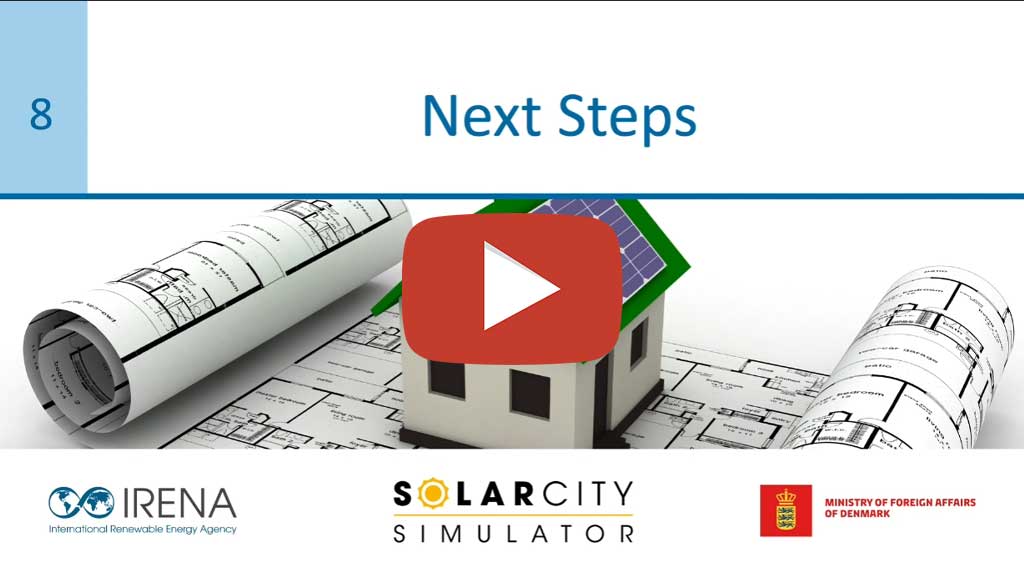Press Release, Solar 2 people
How to get solar PV on your roof

In previous blogs we have outlined the variety of reasons as to why to install solar panels on roofs, but it is of equal importance that people know how to do it as well. The following blog contains important aspects that consumers should consider in order to empower themselves with solar PV.
Certification of installers
One of the most important elements of installing a solar system is selecting installers who have the necessary knowledge and skills to install a rooftop solar system properly and safely. Certification programs exist in many countries for solar installers, so it is advisable to choose a company that is certified in these programs. Certified installers can bring a level of expertise to your solar project, which provides you with peace of mind for the quality, efficiency, and longevity of your installation.
Examples of certification programs for installers are:
- The United States – NABCEP
- China – SGS
- The United Kingdom – MCS
- France – CERTISOLIS
Thus, it is important to research and consider the existing solar installers certifications in a country as this will help to guarantee the success and sustainability of solar projects.
Moreover, trusted installers can be found by taking a look at the members of the solar association of a specific country or region, many of which can be found via the Global Solar Council website such as SER, MESIA, Solar Power Europe, and many more.
There are other certifications to look out for when considering transitioning to solar energy, for example:
- R2 – An indication of the recyclability of a given panel.
- ROHS – A commitment to avoid the use of hazardous chemicals and materials in the development of renewable energy sources.
- Cradle to Cradle – A commitment to both responsible sourcing and waste management of renewable energy sources
There are a variety of these certifications which guarantee that a consumer’s choice to use solar PV is as sustainable and environmentally friendly as possible.
Correct sizing in relation to consumption profiles
When ready to start planning a rooftop project, some key questions arise: How many panels do you need? What capacity do you want your installation to be? Do you need a battery?
These are all important decisions to consider as they will have an effect on the cost, and dimension of the system. In fact, it is important that rooftop solar plants are sized according to the demand they’ll need to satisfy (keeping into account the near future power needs resulting from a wider electrification but avoiding oversizing), to minimize the excess energy to be fed to the grid and reduce investment cost in storage while maximizing the self-consumption capacity.
Of course, when making a plan with the installers, they will perform a study of the building as well as on current and planned energy usage, and compare this with the available solar energy resource in your region. They will then calculate the number and size of solar panels you will need to meet all or a portion of the electrical power requirements.
Conversely, depending on your area, you can use tools that allow for calculation of solar generation, payback times, and more, such as Chile’s national simulator; or even explore the IRENA SolarCity Simulator, which can provide detailed information on energy generation, payback times, and many other factors relating to solar installations in a number of cities. This is done via the use of satellite imagery which is able to estimate the area suitable for panels, the solar radiation on the given area, as well as the geographical orientation and peak sun times. There are also a number of software tools developed by specialized companies to allow you to perform comprehensive simulations.
Installing efficient and high-quality solar panels for safety and longevity
Solar panels are high-tech pieces of equipment that will guarantee the efficient conversion of solar energy in clean and affordable power for a long time, but it is still important to find the best panels for your project as they will maximize the benefits that you can gain from your own energy transition.
All solar panels will have an accompanying document that provides the specifications of the systems. Important aspects to look for are safety qualifications, efficiency levels, and durability.
A typical solar panel today has an energy conversion rate of around 20% and a lifetime of 30 years, it is important to check these figures so you can be confident in the performance of your installation. It is also very helpful to understand the basic maintenance practices that can maximize rooftop systems lifetime and production.
Integration with solar thermal, electrical mobility, and energy storage
Solar PV is capable of doing much more than allowing you to use your kettle or keep the lights on. Add-ons to solar installations can be used to maximize benefits and create further opportunities.
For example, the installation of a solar thermal unit can use solar energy for the heating of the house and the water as opposed to a gas boiler, generating significant savings given the volatility and high prices of natural gas.
Another important aspect to consider is to install a battery or another small-scale energy storage solution as part of a much more capable project. Storing the power generated through the sun when it is not immediately employed during the day allows for it to be used at night, for example to heat the house or to charge an electric vehicle.
Indeed, rooftop solar PV is the best way to incorporate the use of electric vehicles in our lifestyles and can make charging significantly cheaper. Combined with a battery, you can use the stored energy throughout the day to charge the vehicle at downtimes and reduce a large portion of expenses. Furthermore, as a developing solution, the electric vehicle’s battery itself can be used as a storage system for your domestic appliances when it is connected to the home grid.
Incentives bring down the payback time
Over time, solar panels come to pay for themselves due to the savings they generate on energy bills. Payback times can depend on the energy costs in your area as well as your level of irradiation and power generation, as well as the way you manage your electricity use. But there are many incentive schemes that you can take advantage of to make this time shorter, which means that you can start enjoying free clean power sooner.
There are a variety of incentives offered by governments that can help reduce the payback time of an installation, and it is crucial to understand which are in place in a specific country when planning a rooftop solar installation to ensure the best economic results.
We have talked about incentives in our blog “Incentives and Remuneration Schemes” and the forms they take, but here are some of the main instruments:
- Grants – The government can offer grants to enable people to pay for part of their system, and therefore reduce the investment in a project.
- CAPEX returns – You could receive a refund of the upfront capital invested in the project.
- FIT – Feed-in Tariffs allow you to sell energy to the grid, allowing you to continually benefit from any excess from your solar system.
- Tax benefits – You could be eligible for tax deductions as a result of using a renewable energy source.
So there you have it, there are many things to consider when starting your own energy transition. But all of these will give you peace of mind that your installation will be long lasting and properly functioning.
Global Solar Council hopes that this blog series has enticed people around the world to learn more about solar PV and how they can empower themselves to contribute to a sustainable future.
The sun keeps shining on the future of solar PV. Join the transition!
Take a look at this video in IRENA´s video series, on the steps to take when installing a solar system for more helpful information!
- An informative video from IRENA.
Our partner IRENA has released a set of informative videos on solar systems covering a wide variety of topics. This one (below) focuses on the Next Steps to install a solar PV system; from selecting the contractor, checking the costs, checking the contracts, comparing bids, system handover and documentation, the system owner responsibilities , and finally - the system installer responsibilities.
![Global Solar Council [logo]](/static/images/gsc-logo-horizontal.svg)
